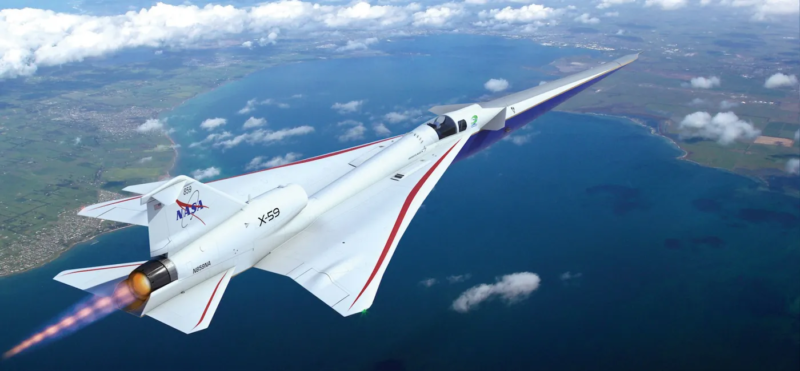NASA’s X-59 Supersonic Jet Completes First Ground Taxi Test

NASA’s groundbreaking X-59 QueSST experimental aircraft, designed to fly faster than the speed of sound without creating disruptive sonic booms, has completed its first taxi tests—an essential milestone before flight trials begin.
Engineered as part of NASA’s Quesst (Quiet SuperSonic Technology) mission, the X-59 features a sleek, 99-foot (30-meter) elongated body with a radical design that eliminates the traditional front windscreen. Instead, pilots rely on NASA’s External Vision System (XVS), an augmented reality-enabled camera display that offers a real-time forward view.
In July 2025, the X-59 was rolled out for low-speed taxi tests at the U.S. Air Force’s Plant 42 facility in Palmdale, California. Test pilot Nils Larson drove the aircraft down the runway at low speeds to verify the functionality of its steering and braking systems. These early tests ensure all ground-based systems perform as expected before the aircraft attempts high-speed taxiing and, eventually, flight.
High-speed taxi tests are the next step, during which the X-59 will accelerate to near takeoff speeds, pushing the boundaries of its ground systems before becoming airborne. The aircraft is being developed in partnership with Lockheed Martin’s legendary Skunk Works division, located at Plant 42—a facility historically known for producing some of the U.S. military’s most advanced aircraft, such as the F-22 Raptor, B-2 Spirit, and RQ-170 Sentinel.
NASA has also conducted several other significant tests on the X-59 in recent months. In collaboration with the Japan Aerospace Exploration Agency (JAXA), NASA tested a scale model of the aircraft in a supersonic wind tunnel to measure and analyze the sound signature underneath the jet. This data is vital to verifying the X-59’s ability to generate a soft sonic “thump” instead of the loud booms typical of supersonic travel.
In May 2025, NASA simulated various in-flight scenarios using onboard systems to test the aircraft’s response to potential failures. Earlier, in April, the agency performed an “engine speed hold” test—similar to cruise control—to ensure the jet’s engine could sustain precise thrust levels. And to kick off the year, NASA conducted afterburner tests that injected fuel into the exhaust stream to simulate maximum performance conditions.
Pending the success of upcoming tests, NASA plans to launch a series of controlled flight demonstrations over selected populated areas in the U.S. The purpose of these flights is to collect data on how communities experience and perceive the reduced sonic impact, which will be shared with regulatory agencies.
The long-term objective of the X-59 program is to inform regulatory changes that could eventually lift the decades-long ban on commercial supersonic flights over land. If successful, NASA’s innovations could pave the way for the return of faster-than-sound air travel, transforming not only commercial aviation but also applications in emergency response and medical transport.
With the X-59, NASA is setting the stage for a quieter, faster future in aviation.
Boom Supersonic achieved a historic milestone earlier this year by flying faster than the speed of sound without producing a disruptive sonic boom. On January 28, 2025, the company’s XB-1 demonstrator aircraft successfully broke the sound barrier three times during a milestone test flight. Remarkably, none of these supersonic events generated an audible sonic boom on the ground. This breakthrough marks a significant advancement in quiet supersonic technology and positions Boom at the forefront of next-generation, high-speed aviation innovation along with NASA’s X-59 QueSST experimental aircraft.
Related News: https://airguide.info/?s=X-59, https://airguide.info/?s=supersonic
Sources: AirGuide Business airguide.info, bing.com, yahoo.com, nasa.gov
